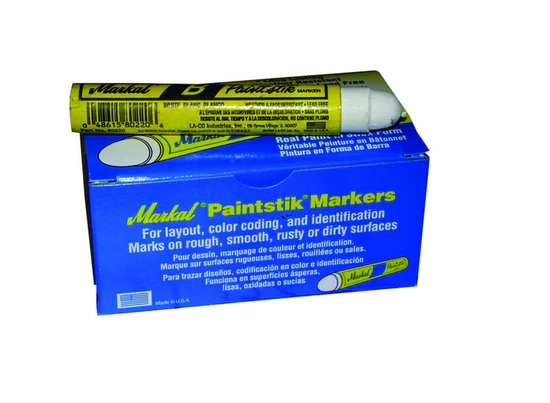A tire blowout used to mean costly replacements and wasted time. Now, technology has changed the way tires are repaired. New chemical formulas are making fixes faster, stronger, and more reliable. These solutions not only patch holes but also extend tire life. In the fast-evolving world of automotive care, innovation continues to reshape how repairs are done. One interesting tool making waves in tire customization is the tire paint marker, offering a fresh way to enhance the look of any tire.
Sealants That Repair Faster and Last Longer
New tire sealants are engineered to act fast. Unlike traditional patches that require multiple steps, advanced liquid formulas instantly bond with the rubber. These compounds fill punctures, creating airtight seals that keep tires rolling longer.
Some formulas even work in extreme temperatures. This means better durability in all driving conditions. Whether it’s freezing cold or scorching hot, these chemicals keep the tires safe and functional. The ability to have a quick and long-lasting fix makes these sealants a game-changer for both individual drivers and professional tire shops.
Self-Healing Polymers: The Future of Tire Repair
Imagine a tire that fixes itself. Self-healing polymers are making this a reality. These compounds respond to air loss by sealing punctures automatically. When a tire gets damaged, the material reacts by expanding and covering the hole.
This technology is still being improved, but the results are promising. It could reduce the need for constant repairs, making driving safer and more convenient. In the near future, self-healing tires may become standard in the industry. The use of this technology could also help reduce overall tire waste, as fewer tires would need to be replaced prematurely due to minor damage.
Eco-Friendly Solutions for Sustainable Repairs
The shift toward eco-friendly automotive products is growing. Many tire repair formulas now use biodegradable materials. These chemicals break down naturally, reducing environmental harm.
Water-based adhesives and natural rubber blends are also gaining popularity. They offer the same strength as traditional materials but with a smaller carbon footprint. As more tire shops switch to sustainable solutions, repairs are becoming greener without sacrificing quality. This shift also aligns with global efforts to create environmentally friendly solutions across all industries.
Nano Technology: Strengthening Tire Repairs at a Microscopic Level
Nano-enhanced sealants are changing how tire repairs work. These tiny particles reinforce the structure of the tire, making it more resistant to wear and tear. When applied to a damaged area, nanomaterials bond deeply with the rubber, preventing further damage.
This technology improves the lifespan of a repair, keeping tires roadworthy for longer periods. The ability to strengthen tires at a microscopic level is a major breakthrough in the industry. With the rise of smart materials, nano-enhanced solutions will likely become a standard in advanced tire repair.
Liquid Patches: An Instant Fix for Punctures
One of the latest innovations is the development of liquid patches. These are different from traditional tire plugs or patches. Instead of manually applying a fix, liquid patches spread evenly inside the tire, sealing any holes.
This method is highly effective for small punctures. It’s also a great option for emergencies, allowing drivers to continue their journey without needing immediate professional repairs. Many tire shops are now offering these solutions as a quick alternative for minor tire damage, reducing downtime for drivers.
Foam-Based Fillers: Reducing Air Leaks and Enhancing Durability
Foam-based fillers are becoming a popular choice for tire repair. These lightweight yet durable solutions fill punctures while providing additional reinforcement. Unlike traditional rubber-based patches, foam fillers adapt to the tire’s movement, preventing future cracks.
They also help maintain proper air pressure, improving fuel efficiency and tire performance. This innovation is particularly useful for commercial vehicles and heavy-duty tires that experience significant stress on the road.
The Impact of Advanced Chemicals on Tire Safety
Safety is a top priority when it comes to tires. The latest repair formulas are tested for strength and reliability. They provide stronger bonds, ensuring that fixes don’t fail under pressure.
Some chemicals even improve tire flexibility. This helps prevent future cracks and makes the tire more resistant to damage. As these products continue to evolve, drivers can feel more confident in the durability of their repairs. Stronger, more reliable repairs mean fewer accidents caused by unexpected tire failures.
Innovative Adhesives for Stronger Bonds
Advanced adhesives are making tire repairs more durable than ever before. These formulas create chemical bonds that mimic the tire’s natural structure, allowing for seamless integration.
Unlike older adhesives that could weaken over time, new options are designed to withstand high levels of heat, pressure, and road impact. This means repairs last longer, giving tires extended life and saving drivers money on replacements.
Summary Insights: The Road Ahead for Tire Repair Innovations
The automotive world is constantly evolving, and tire repair chemicals are at the forefront of change. From instant sealants to self-healing polymers, these advancements are making tire maintenance easier, faster, and more efficient. With the rise of eco-friendly options and nano-enhanced technology, the future of tire repairs looks promising. As these innovations continue to develop, safer and more reliable solutions will keep drivers on the road with confidence.
As technology improves, tire repairs will continue to evolve, offering better performance and more sustainable solutions. Drivers, mechanics, and industry experts will all benefit from these breakthroughs, leading to safer roads and longer-lasting tires.


